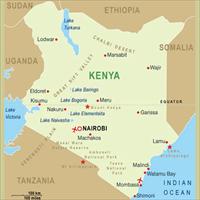KENYA: New cases of black fever in north-east

At least 33 cases of visceral leishmaniasis, a parasitic disease also known as Kala-azar or black fever, have been reported in the past four weeks in the drought-affected north-eastern district of Isiolo.
"New cases of Kala-azar have been reported in Merti and Sericho areas of Isiolo, which are bordering Wajir and Garissa [districts] … 33 people have been confirmed positive," said a report by the Isiolo drought monitoring office.
Some 30 patients were transferred to Wajir, about 200km north of Isiolo, for treatment due to a lack of medical supplies.
Ali Wario, Isiolo district disease surveillance officer, told IRIN no deaths had so far been reported. Fresh medical supplies were also expected, he said.
Trained medical personnel have been deployed to the district amid ongoing awareness creation to stem the spread of the disease, Wario said.
The disease has worsened the health status of local children, most of whom are malnourished and have lowered immunity due to the prevailing drought. Kala-azar is endemic in mainly pastoralist northern Kenya and outbreaks are common during drought.
Local residents said the response to the outbreak had been slow and more had to be done. "Affected families must be assisted with food and mobile health services. They should not travel all the way to Wajir … to seek treatment," said Ibrahim Halake, a resident.
"There is an urgent need to provide drugs and mosquito nets to the communities in the affected areas," Paul Kimeu, Isiolo district drought monitoring officer, said.
The movement of pastoralists in search of water and pasture, Kimeu said, was linked to the spread of the disease.
The leishmaniasis parasite, which is carried by sand flies, migrates to internal organs and bone marrow once it enters the body and if left untreated, infection can lead to death.
Sand flies thrive in the cracks of mud-covered dwellings, in cow dung, rat burrows, ant-hills, dry river beds and vegetation. Some 130 people were infected and nine deaths reported in the last outbreak, which was first reported in April 2008 in Wajir.
 Back and Next - Back and Next
Back and Next - Back and Next See Also - See Also
See Also - See Also